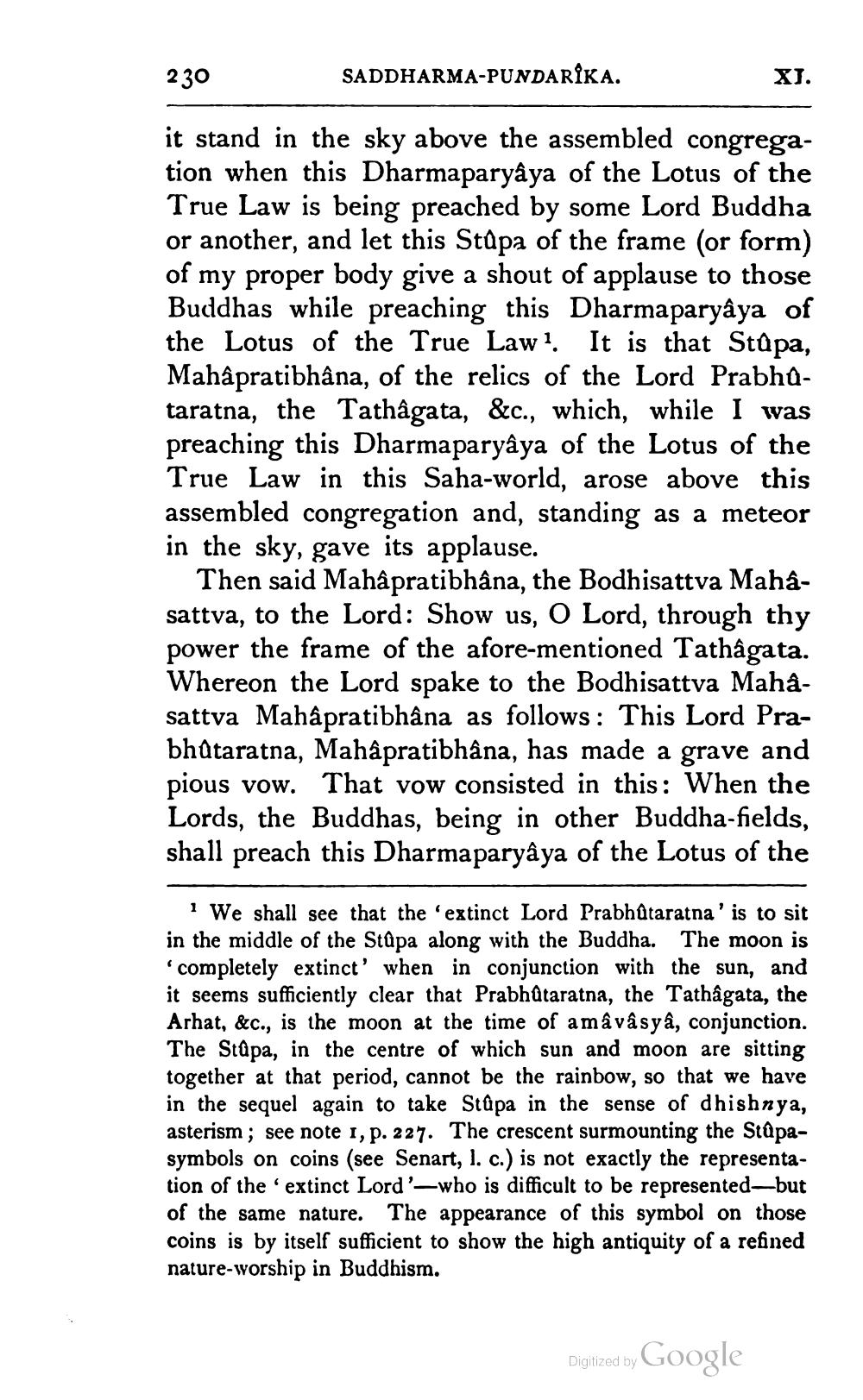________________
230
SADDHARMA-PUNDARÎKA.
XI.
it stand in the sky above the assembled congregation when this Dharmaparyâya of the Lotus of the True Law is being preached by some Lord Buddha or another, and let this Stapa of the frame (or form) of my proper body give a shout of applause to those Buddhas while preaching this Dharmaparyâya of the Lotus of the True Law? It is that Stapa, Mahâpratibhâna, of the relics of the Lord Prabhutaratna, the Tathagata, &c., which, while I was preaching this Dharmaparyâya of the Lotus of the True Law in this Saha-world, arose above this assembled congregation and, standing as a meteor in the sky, gave its applause.
Then said Mahâpratibhâna, the Bodhisattva Mahasattva, to the Lord: Show us, O Lord, through thy power the frame of the afore-mentioned Tathâgata. Whereon the Lord spake to the Bodhisattva Mahâsattva Mahâpratibhâna as follows: This Lord Prabhàtaratna, Mahâpratibhana, has made a grave and pious vow. That vow consisted in this: When the Lords, the Buddhas, being in other Buddha-fields, shall preach this Dharmaparyâya of the Lotus of the
1 We shall see that the 'extinct Lord Prabhūtaratna' is to sit in the middle of the Stupa along with the Buddha. The moon is 'completely extinct' when in conjunction with the sun, and it seems sufficiently clear that Prabhůtaratna, the Tathầgata, the Arhat, &c., is the moon at the time of amâvâsyâ, conjunction. The Stậpa, in the centre of which sun and moon are sitting together at that period, cannot be the rainbow, so that we have in the sequel again to take Stûpa in the sense of dhishnya, asterism; see note 1, p. 227. The crescent surmounting the Stậpasymbols on coins (see Senart, I. c.) is not exactly the representation of the 'extinct Lord'—who is difficult to be represented—but of the same nature. The appearance of this symbol on those coins is by itself sufficient to show the high antiquity of a refined nature-worship in Buddhism.
Digitized by Google




